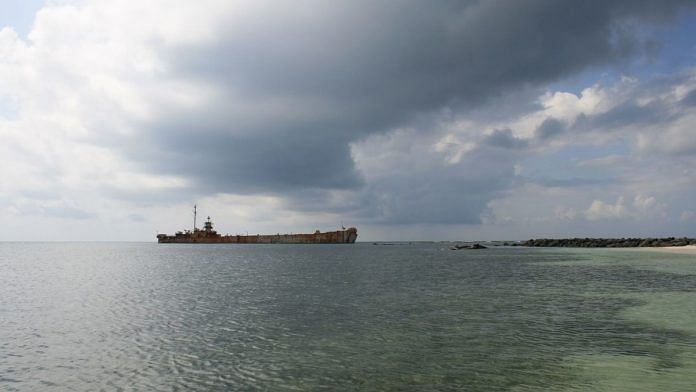New Delhi: A Twitter spat between the Chinese and Australian envoys to India this week has brought the focus back on China’s consistent refusal to accept the 2016 South China Sea Arbitration, which has injected fresh lease of life to groupings such as Indo-Pacific and Quad while deepening the crisis in the region.
On Friday, the two envoys got into an argument, primarily on the 2016 arbitration on some South China Sea disputes, which didn’t go in Beijing’s favour.
Australian High Commissioner to India Barry O’Farrell’s statement that Australia remains “deeply concerned” by the Chinese action in the South China Sea region sparked off a couple of exchanges between the two. The Chinese envoy Sun Weidong said Beijing’s maritime rights are in conformity with international law including the United Nations Convention on the Law of the Sea (UNCLOS).
To this, O’Farrell said “follow” the 2016 arbitration, prompting Sun to reiterate the longstanding Chinese position that the ruling is “illegal, null and void” and “has no binding force”.
So-called arbitral tribunal of #SouthChinaSea violated principle of state consent. The award is illegal,null&void&has no binding force. China neither accepts nor recognizes it. We hope those non-claimant countries could contribute to regional peace&stability rather than contrary.
— Sun Weidong (@China_Amb_India) July 31, 2020
Over the years, this position has not only cost China some of its old friends like Australia, but has also deepened the crisis in the Indo-Pacific region, which is what prompted the exchange.
‘No historical rights’
The case originated in January 2013 when the Philippines dragged China to the tribunal accusing Beijing of violating the UNCLOS. In its submissions, the Philippines questioned the legal validity of China’s claims on the nine-dash line — a demarcation line in the South China Sea — under the UNCLOS.
After protracted proceedings in the case, the verdict was finally awarded on 12 July 2016 in favour of the Philippines. It said China has “no historical rights” on the nine-dash line.
Baljit Singh Kalha, senior partner at Titus & Co, Advocates, and expert in international law issues, said the case was decisively dealt with.
“The tribunal made clear that claims to historic rights are not lawful and superseded by international convention and stated that “Insofar as China’s … claim to historic rights … within the nine-dash line”, the tribunal cannot agree with this position,” said Kalha.
Also read: New Delhi denies Dhaka claim on India-China LAC tensions, says it was ‘fully briefed’
The pushback
As it rejected the tribunal ruling, China continued with its belligerence in the South China Sea, resulting in some of Beijing’s close friends such as Australia and New Zealand to openly oppose the Chinese Communist Party’s moves.
In this period, the US also revived the Indo-Pacific and the Quad security dialogue. Other countries, including India, also started to push back against China.
“The fact that China chose to ignore (the ruling) then and even now they are calling it illegal… has made more and more countries such as India, Australia, New Zealand and the Philippines, Indonesia and Malaysia to push back and be vocal about it, who were otherwise not,” said Rajeshwari Pillai Rajagopalan, distinguished fellow and head (nuclear & space policy initiative), Observer Research Foundation.
“China’s aggressive behaviour has led the Philippines to ask the US to continue its military presence… whereas sometime back President (Rodrigo) Duterte was ready to kick the US out but today he is not,” Rajagopalan added.
The Philippines move came after Beijing told it last year that it won’t honour the arbitration even as territories in the South China Sea continue to remain disputed between the two.
The Indian play
India has always maintained that there should be freedom of navigation and rules-based order in the South China Sea. So New Delhi now plays a key role in the Indo-Pacific strategy closely aligned with the US. But Prime Minister Narendra Modi has stated that India does not see the initiative as countering China.
Now, India is considering bringing Russia into the Indo-Pacific initiative in an effort to make it more inclusive and create an Asian partnership of sorts.
“Bringing Russia into this will be a game-changer and it will be game half-won because it could be an effort at creating a rift in the Russia-China partnership,” said Rajagopalan.
Also read: Nepal to send its controversial new map to UN, Google this month



